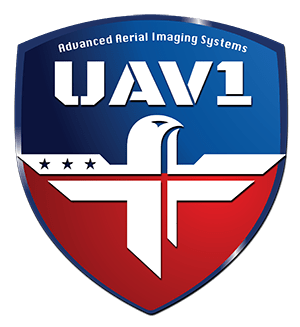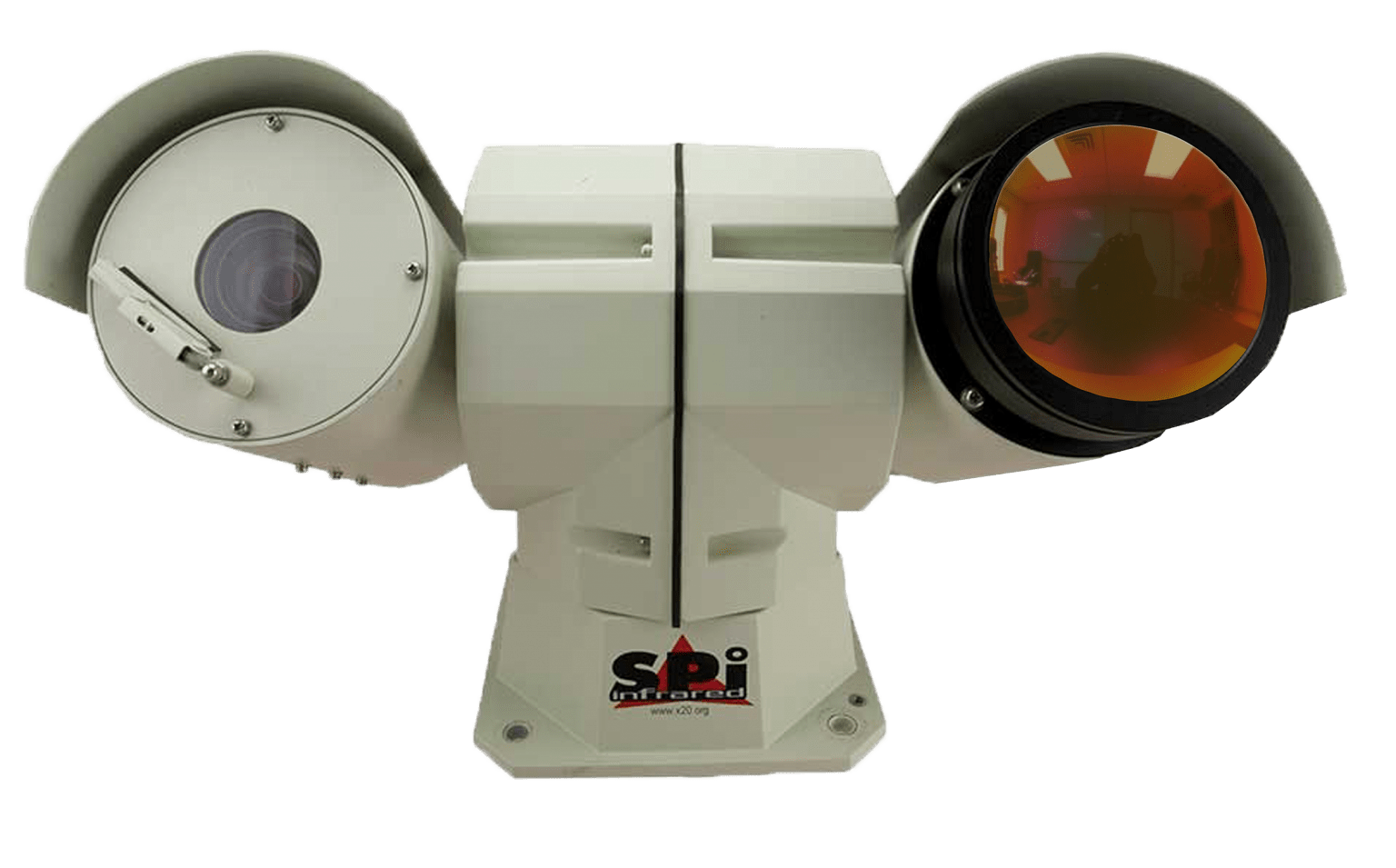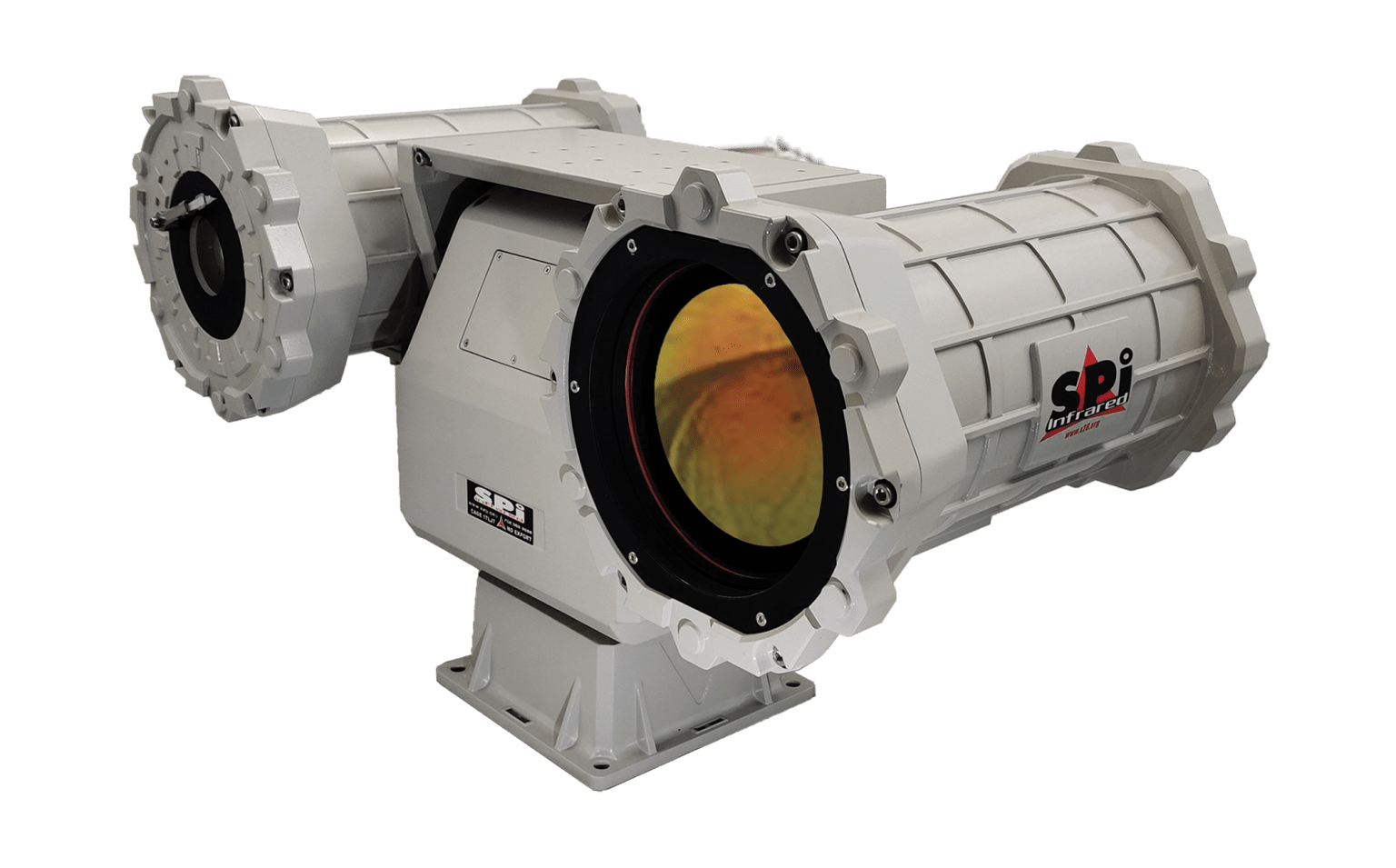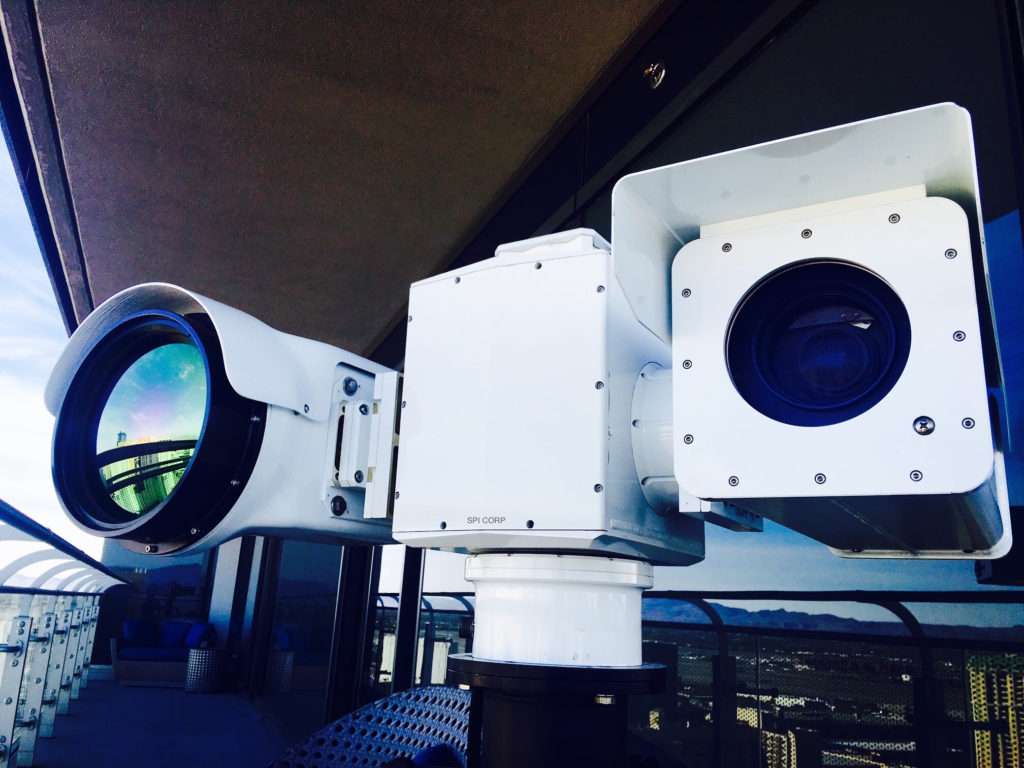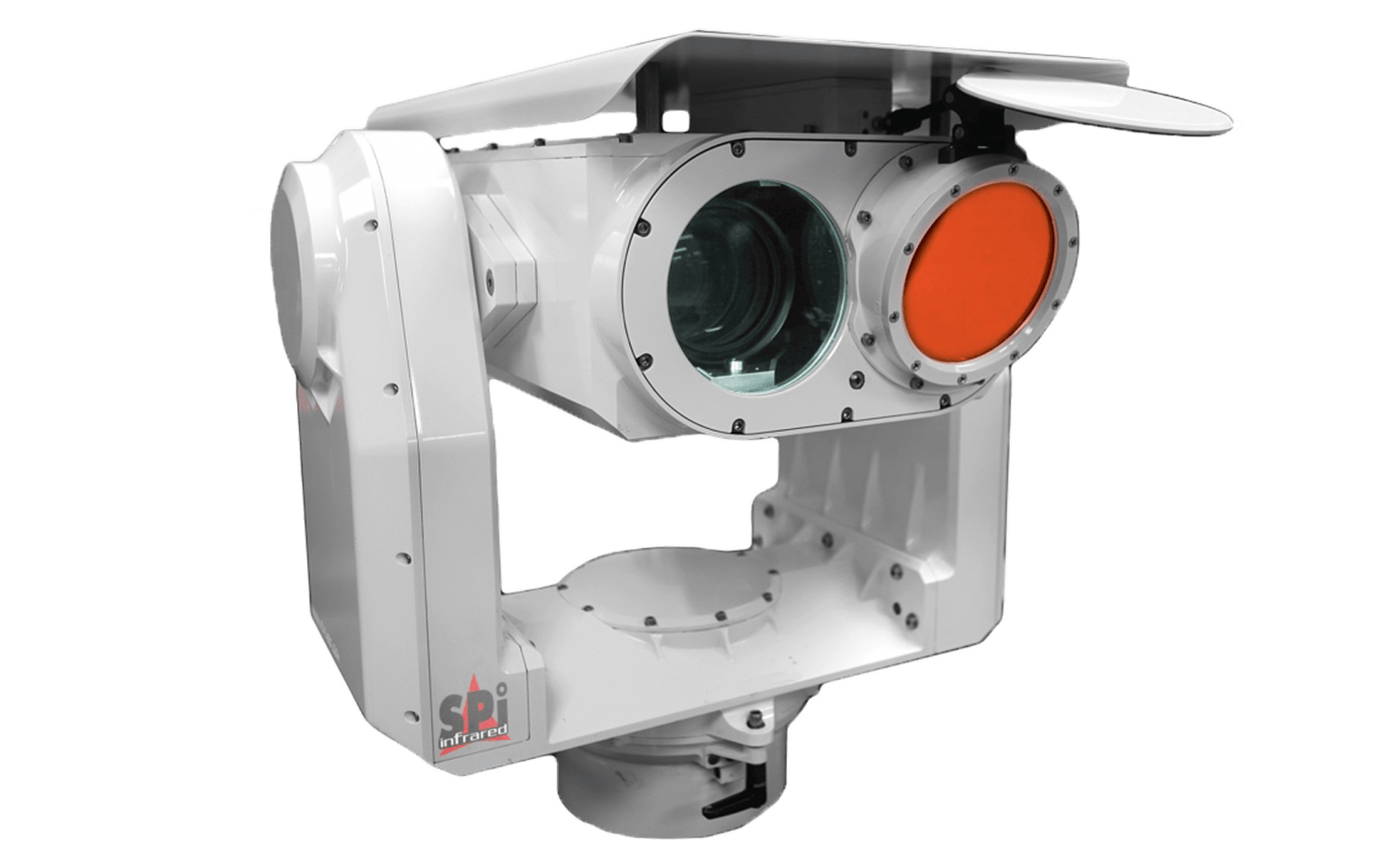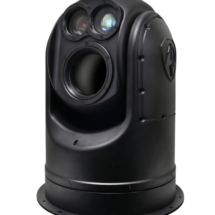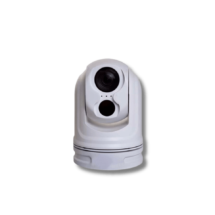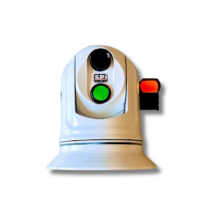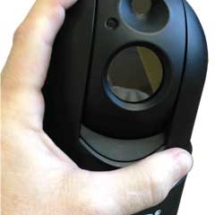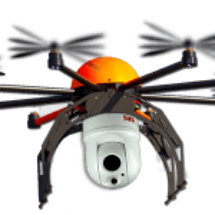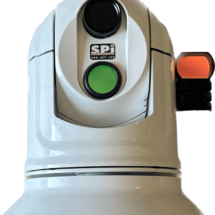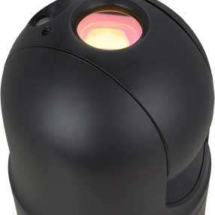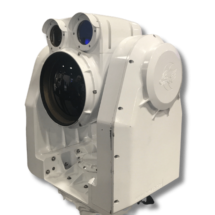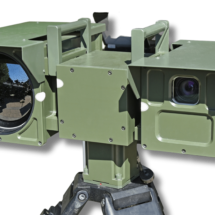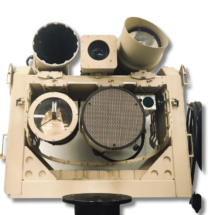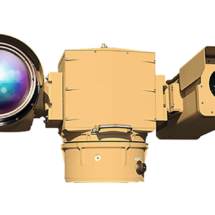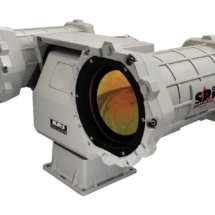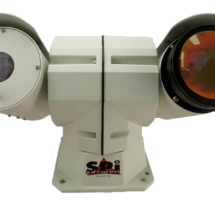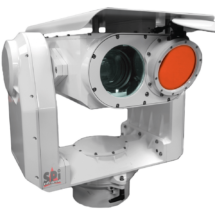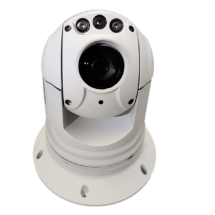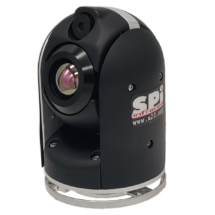How Can Long Range Thermal Cameras Enhance Commercial Surveillance?
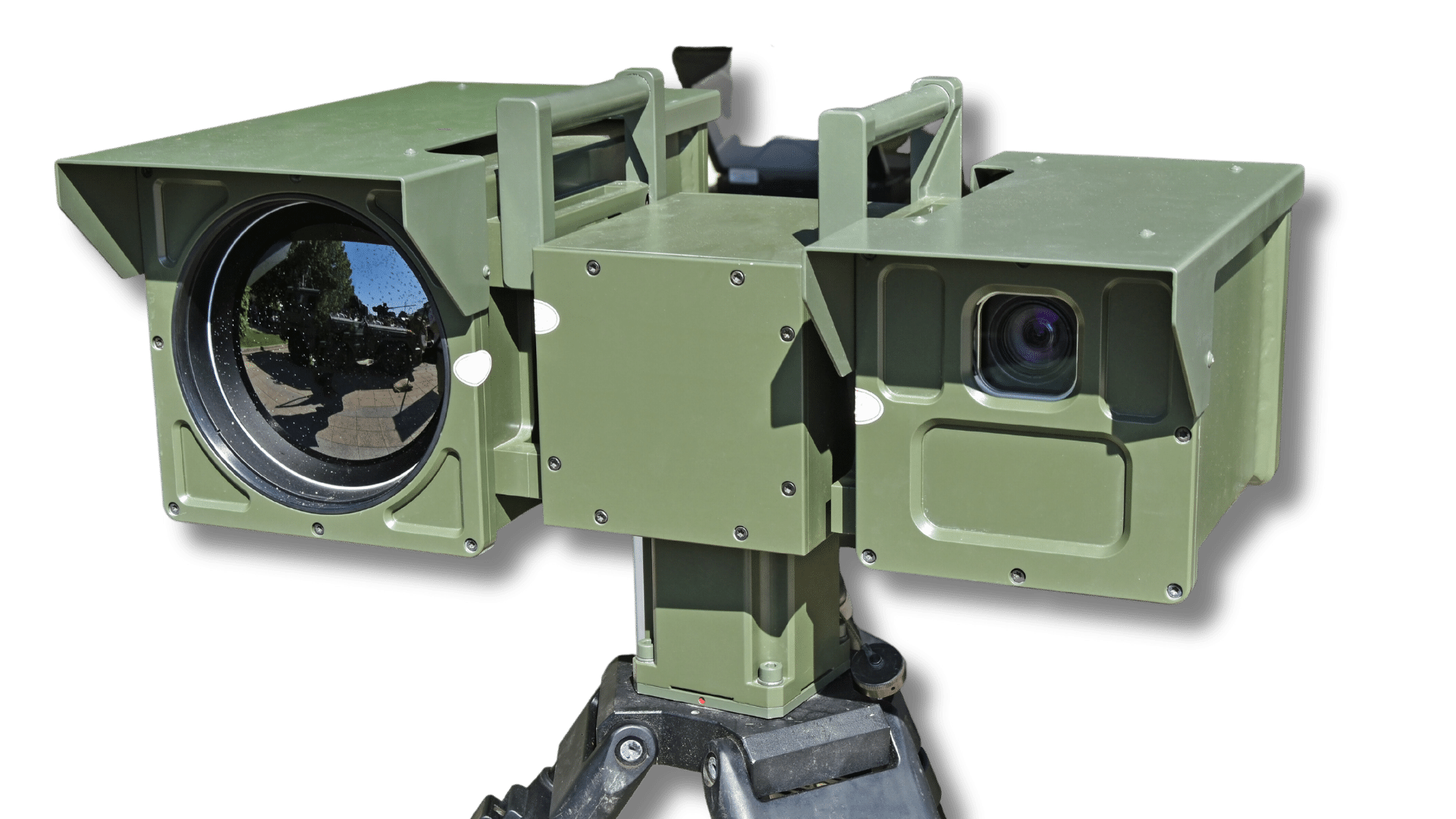
1. Introduction
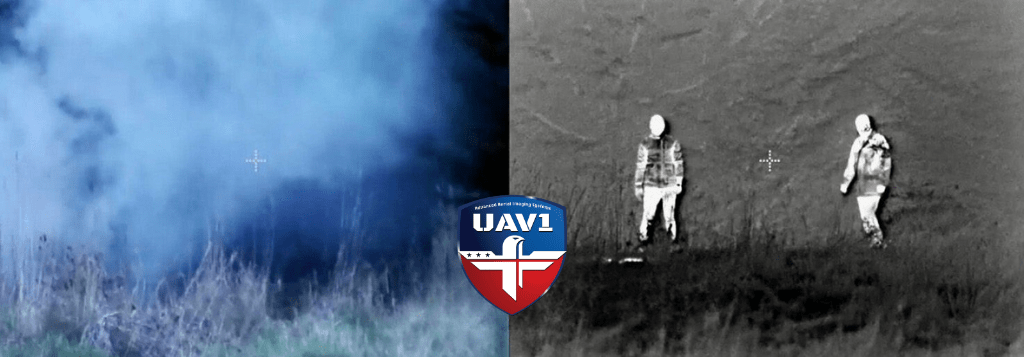
In today’s rapidly evolving technological landscape, surveillance technology has emerged as a pivotal tool for ensuring public safety, maintaining security, and even in monitoring wildlife or hazardous environments.
Such technologies play an integral role in a myriad of sectors, from law enforcement to wildlife conservation, and from industrial safety to border security. Surveillance is no longer just about watching and recording; it’s about understanding the environment, predicting potential threats, and acting proactively.
Among the various surveillance tools available, long-range thermal cameras have gained significant prominence in recent years.
Unlike traditional cameras that capture visible light, thermal cameras detect infrared radiation, allowing them to “see” in complete darkness, through smoke, light fog, and even some obstructions. This unique capability makes them invaluable for situations where visibility is compromised or for monitoring vast expanses of land or sea, day or night.
As threats become more sophisticated and the need for advanced monitoring grows, the importance and application of long-range thermal cameras are set to increase, marking them as a cornerstone of modern surveillance systems.
2. What are Long-Range Thermal Cameras?
Thermal Imaging Technology:
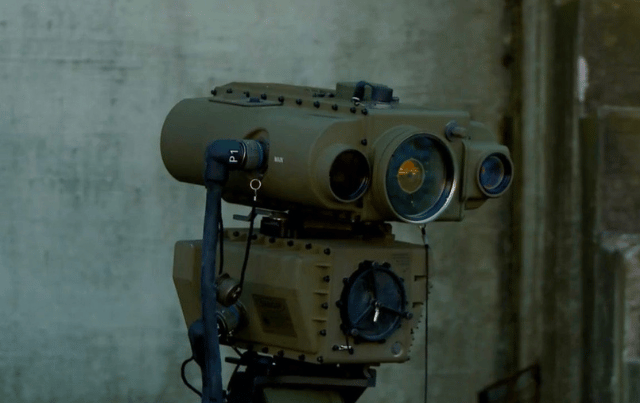
At the heart of long-range thermal cameras lies the science of thermal imaging. Thermal imaging, in essence, captures the infrared radiation emitted by all objects.
Every object with a temperature above absolute zero (-273.15°C or -459.67°F) emits infrared radiation, albeit at varying intensities. This radiation is invisible to the human eye but can be detected by thermal sensors.
By capturing these variations in infrared radiation, thermal imaging creates a “heat picture” of the scene, depicting objects based on their temperature differences. This allows for the visualization of subjects in complete darkness or obscured conditions, as they’re represented by their heat signatures rather than visible light.
Differentiation between Regular Cameras and Thermal Cameras:
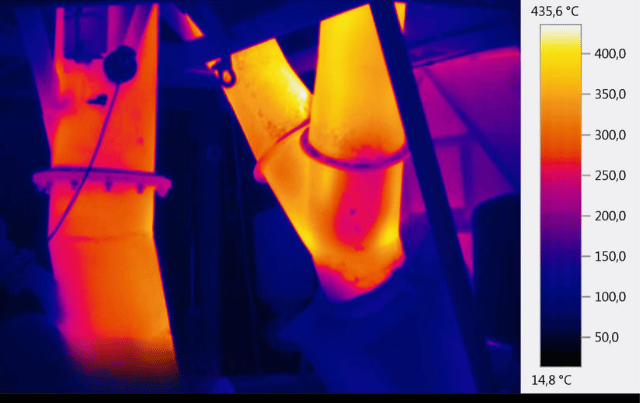
Regular cameras, often referred to as optical cameras, capture light within the visible spectrum, which ranges from about 400 to 700 nanometers. This is what the human eye perceives as “light,” and it forms the images we see every day.
On the other hand, thermal cameras detect radiation in the infrared spectrum, which typically ranges from 900 nanometers to 14,000 nanometers.
This difference in captured wavelengths means that while optical cameras rely on reflected light to form images, thermal cameras form images based on the heat objects emit.
Defining “Long-Range” and its Significance:
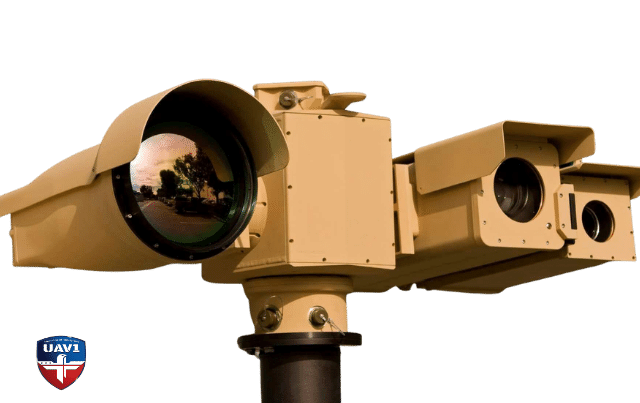
The term “long-range” in the context of thermal cameras usually refers to the camera’s ability to detect, recognize, and identify objects or threats from a significant distance.
The exact distance can vary based on the camera’s specifications and the size of the object being observed. For instance, some advanced long-range thermal cameras can detect a human-sized heat signature from several kilometers away.
The significance of this capability is immense, especially in applications like border security, maritime surveillance, and wildlife monitoring. Being able to identify potential threats or observe events from a safe distance allows for enhanced security and better decision-making, without putting personnel or assets at immediate risk.
3. Benefits of Using Long-Range Thermal Cameras in Commercial Surveillance
Enhanced Night Vision:
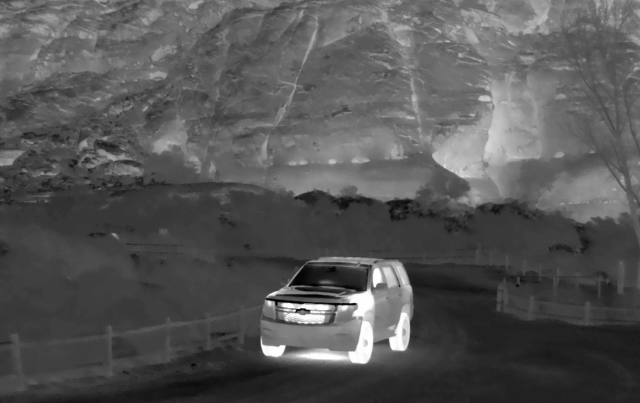
In a world where the cover of darkness often aids malicious activities, the ability of thermal cameras to “see” without light is invaluable. Traditional cameras capture images based on reflected light.
In contrast, thermal cameras visualize the heat radiated from objects. This distinction means that even in pitch-black conditions, where traditional surveillance might falter, thermal cameras continue to provide clear imagery based on temperature disparities.
For commercial entities, this ensures uninterrupted surveillance, irrespective of the daily light cycle or ambient lighting.
Detection Through Obstructions:

Visibility challenges like fog, smoke, or light foliage often plague standard surveillance systems. However, thermal cameras rise above these challenges.
Their reliance on heat signatures means that many obstructions which scatter visible light don’t deter their functionality.
For instance, a misty morning that might obscure the vision of a regular camera doesn’t prevent a thermal camera from detecting a trespasser’s heat signature. This capability ensures consistent surveillance even in less-than-ideal conditions.
Reduced False Alarms:
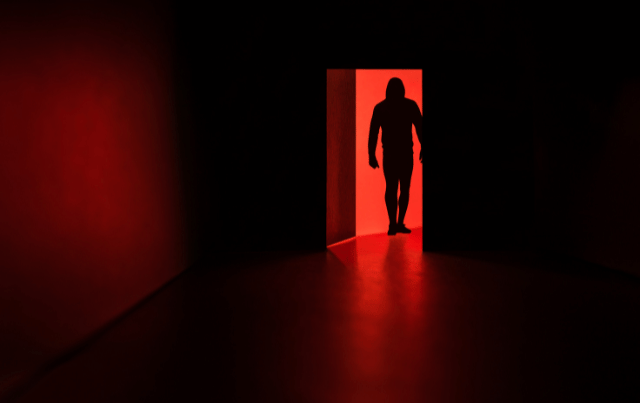
False alarms can be resource-draining and reduce the efficiency of security protocols. Traditional surveillance systems might mistake benign movements, such as rustling leaves, for potential threats.
However, thermal cameras operate based on heat emissions, allowing them to differentiate more accurately between animate and inanimate entities.
The result? A significant reduction in false alarms, ensuring that security responses are more targeted and efficient.
Extended Detection Range:
The essence of “long-range” thermal cameras lies in their ability to monitor expansive areas from a vantage point. This extended range means commercial spaces can be effectively covered with fewer cameras, optimizing resource allocation.
The ability to spot potential anomalies from a distance also provides a crucial time advantage, allowing for timely interventions.
Integration Capabilities:
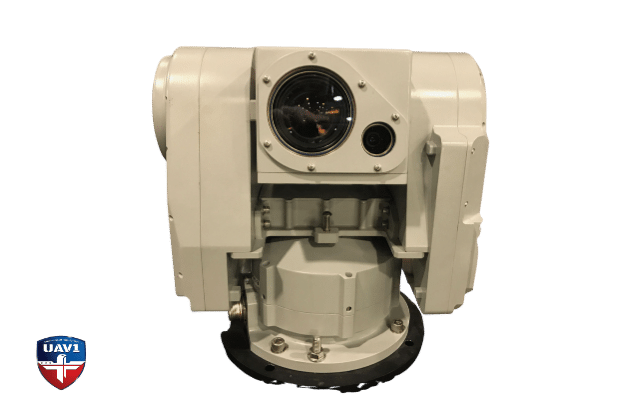
The adaptability of modern thermal cameras is noteworthy. They can be synergized with existing security infrastructures, enhancing the overall surveillance framework without necessitating a complete revamp.
When paired with sophisticated analytics and software solutions, thermal cameras can offer real-time alerts, intruder tracking, and even predictive analytics to preempt potential security breaches.
This integrative potential ensures that commercial surveillance is not just reactive but also proactive, setting new standards in security management.
4. Applications of Long-Range Thermal Cameras
Border Security:
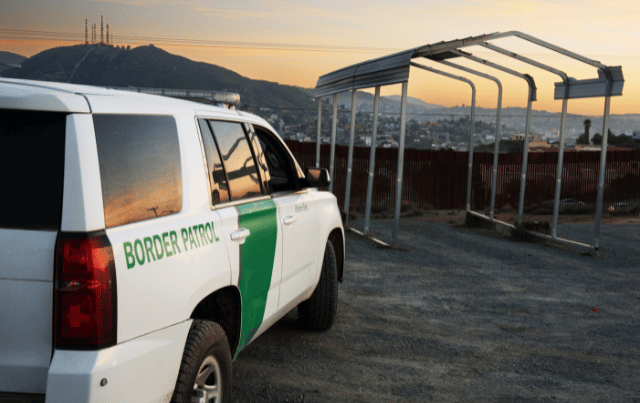
Guarding extensive national frontiers is a paramount task, especially in regions where traditional surveillance methods might be hampered by natural conditions.
Long-range thermal cameras offer a solution by detecting the heat signatures of unauthorized entrants, even in total darkness or adverse weather.
Their ability to cover vast areas ensures that security breaches at borders are promptly identified, allowing for swift responsive action.
Leveraging Long-Range Thermal Cameras at the U.S.-Mexico Border
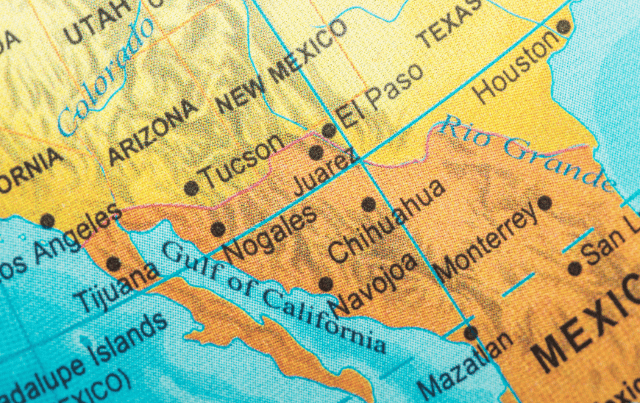
The U.S.-Mexico border, spanning approximately 1,954 miles, is a vast stretch of land characterized by diverse terrains, from deserts to mountainous regions. Ensuring its security is paramount, and the integration of advanced surveillance technology can play a pivotal role in this endeavor.
Our M11 long-range thermal PTZ (Pan-Tilt-Zoom) camera, equipped with an impressive vehicle detection range of 60km and a human detection capability of 30km, stands out as an invaluable tool for border security. Let’s delve into its potential benefits:
- Extended Surveillance Reach: With a 60km vehicle detection range, this camera can monitor vast stretches of the border from strategic points. Placed at critical junctures, such as near populated areas or known smuggling routes, a single camera can keep an eye on a large radius, reducing the need for multiple surveillance points.
- Nighttime and Adverse Weather Performance: Given the camera’s thermal capabilities, its performance remains unaffected by darkness or adverse weather conditions. This is crucial for the U.S.-Mexico border, where nighttime activities and varying weather patterns can pose challenges to traditional surveillance methods.
- Human Detection: The ability to detect individuals from 30km away is particularly beneficial in areas where illegal crossings are frequent. Early detection provides border patrol agents with a significant advantage, allowing for timely interventions.
- Strategic Placement Opportunities: Considering the vast expanse of the border, there are multiple critical points for camera placement. For instance:
- Near San Diego, California, where urban areas come close to the border, the camera can monitor vehicular movements across a vast stretch, ensuring no unauthorized entries.
- At the Big Bend region of Texas, characterized by its remote and rugged terrain, the camera’s human detection capability can be pivotal in spotting individuals attempting to cross undetected.
- The El Paso sector, another high-activity region, can greatly benefit from both the vehicle and human detection features, ensuring comprehensive surveillance.
In conclusion, the integration of our long-range thermal PTZ camera at the U.S.-Mexico border not only enhances the surveillance capabilities but also ensures that border patrol agents are equipped with real-time, accurate information, enabling them to act swiftly and decisively.
This technological advancement promises a more secure and monitored border, safeguarding the interests of the nation.
Enhancing Airport Security with Long-Range Thermal Cameras
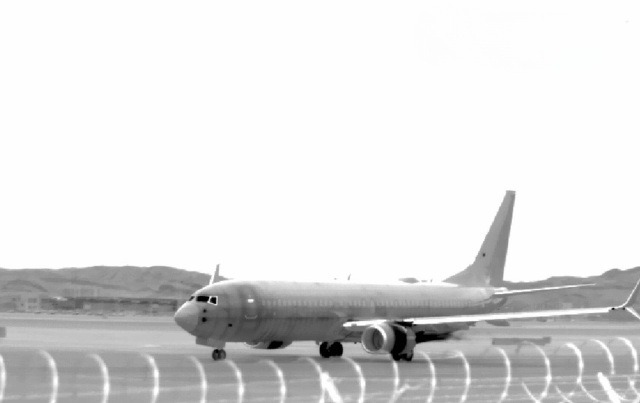
Airports are bustling hubs of activity, with thousands of passengers, employees, and vehicles moving across vast areas daily. Ensuring the safety and security of these complex environments is crucial.
Integrating the long-range thermal PTZ camera, boasting a vehicle detection range of 60km and a human detection range of 30km, can significantly enhance airport security worldwide.
Here’s how:
- Comprehensive Coverage: Given the expansive nature of major international airports, having a camera with a 60km range for vehicle detection ensures that all vehicular movements, including those on runways, taxiways, and peripheral roads, are under constant surveillance.
- Nighttime and Adverse Weather Monitoring: Airports operate around the clock, and activities don’t cease even in adverse weather. The thermal capabilities of the camera ensure uninterrupted surveillance, detecting heat signatures even in complete darkness or foggy conditions.
- Human Detection in Vast Open Spaces: The vast open spaces around runways, hangars, and other airport facilities can be challenging to monitor. A 30km human detection range ensures that any unauthorized individuals in these areas are promptly identified.
Let’s consider some popular airports around the world:

- Hartsfield–Jackson Atlanta International Airport (ATL): As the world’s busiest airport by passenger numbers, ATL spans more than 4,700 acres. With our camera’s range, strategic placement can ensure comprehensive coverage of the entire airport, from runways to parking facilities.
- Beijing Capital International Airport (PEK): Covering an area of approximately 5,600 acres, PEK is one of Asia’s major aviation hubs. The long detection range of the camera can significantly enhance security, especially in the vast open areas around the three terminals.
- Charles de Gaulle Airport, Paris (CDG): Spread across 12,550 acres, CDG is Europe’s second-busiest airport. The camera’s capabilities can provide unparalleled surveillance, covering the extensive runway systems, taxiways, and the expansive landside areas.
- King Fahd International Airport, Dammam (DMM): As one of the world’s largest airports by land area, DMM sprawls over 780 square kilometers. While the sheer size is a challenge, the long-range thermal camera can monitor critical areas, ensuring no unauthorized activities occur.
In conclusion, integrating the long-range thermal PTZ camera into airport security protocols worldwide can revolutionize surveillance. By providing real-time, expansive coverage, it ensures that security personnel are always a step ahead, maintaining the safety and smooth operation of these critical transportation hubs.
Elevating Marine Surveillance with Long-Range Thermal Cameras
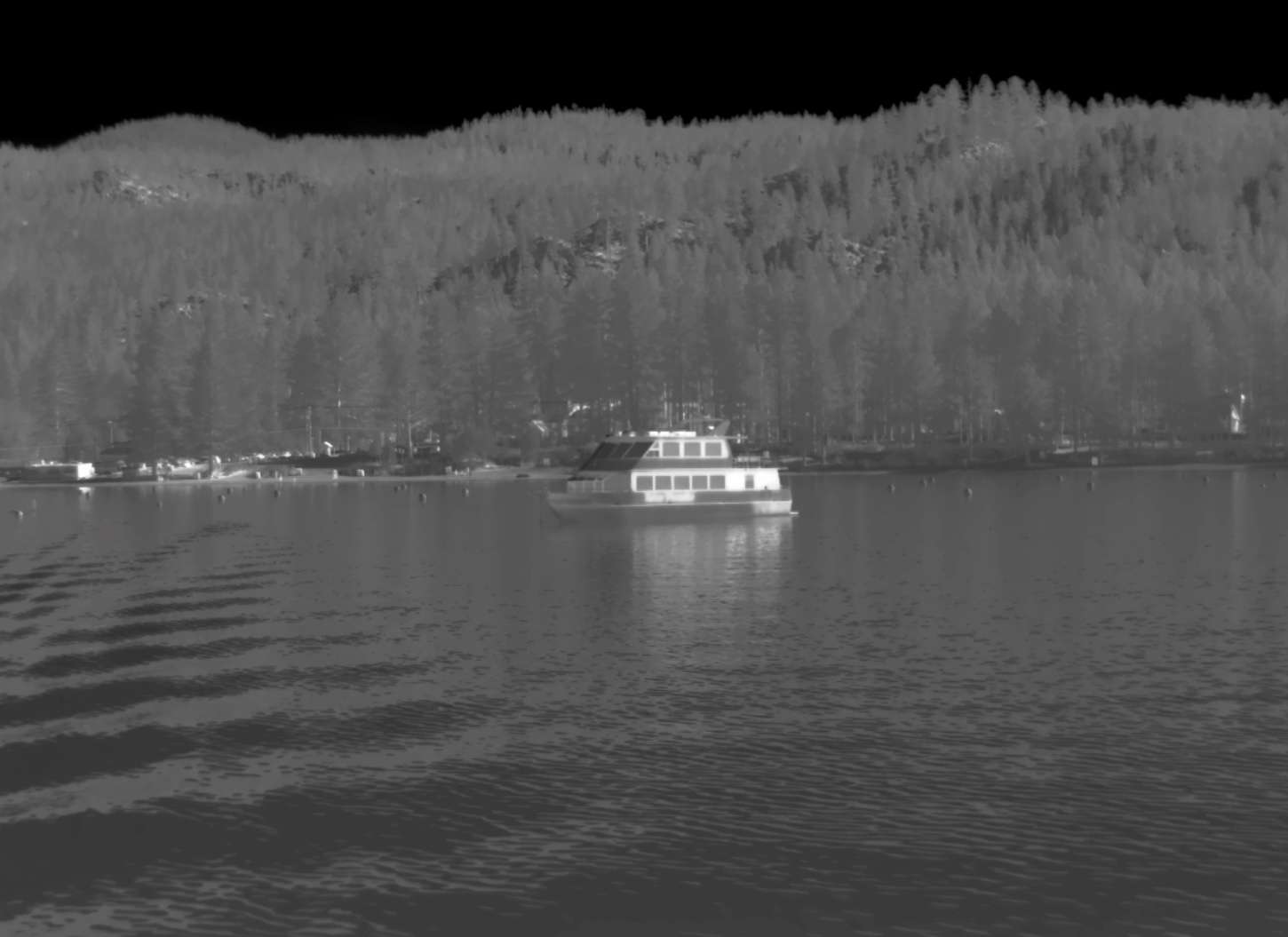
The vastness of the maritime domain presents unique challenges for surveillance, especially in ports that serve as major global trade hubs.
Incorporating the long-range thermal PTZ camera, with a 60km vehicle detection and 30km human detection range, can significantly amplify marine security operations worldwide.
Here’s an exploration of its potential applications:
- Broad Coverage: Ports and harbors are expansive, with numerous vessels, equipment, and personnel in constant motion. The camera’s 60km vehicle detection range can effectively monitor both the vast water areas and the terrestrial zones, capturing every boat, ship, or vehicle that moves in and out.
- Night and Adverse Weather Monitoring: The marine environment is often subject to poor visibility conditions due to fog, rain, or nighttime operations. The thermal capabilities of the camera ensure consistent surveillance, regardless of these challenges.
- Human Detection on Waterfronts: Unauthorized personnel movements on docks, jetties, or even on vessels can be a security concern. The camera’s 30km human detection capability guarantees that such movements don’t go unnoticed.
Let’s consider some critical ports around the world:
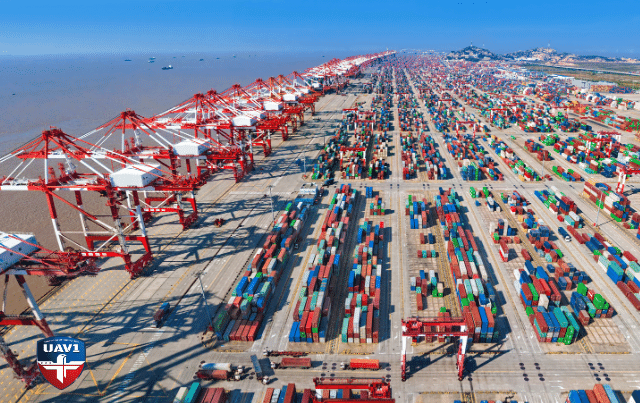
- Port of Shanghai: As the world’s busiest container port, it spans a vast area with numerous terminals. Our camera can provide comprehensive coverage, ensuring every container ship, ferry, and tugboat is under watchful eyes.
- Port of Singapore: A major global hub for shipping, this port sees thousands of vessels annually. The long-range thermal camera can monitor the entire port area, from its deep-water berths to the anchorage areas.
- Port of Rotterdam, Netherlands: Europe’s largest port covers over 42 kilometers. The camera’s capabilities can enhance surveillance, ensuring smooth operations and heightened security across its waterways and docks.
- Port of Jebel Ali, Dubai: As one of the busiest ports in the Middle East, it spans a vast area and serves gigantic cargo ships. Effective monitoring of both the water and land areas of the port can be achieved with the camera’s extensive range.
In conclusion, the integration of the long-range thermal PTZ camera into marine surveillance systems can redefine port security globally. With its ability to provide real-time, wide-scale coverage, it ensures that port authorities can maintain stringent security standards, safeguarding these critical gateways to global trade.
Enhancing Security of Vital Infrastructures with Long-Range Thermal Cameras
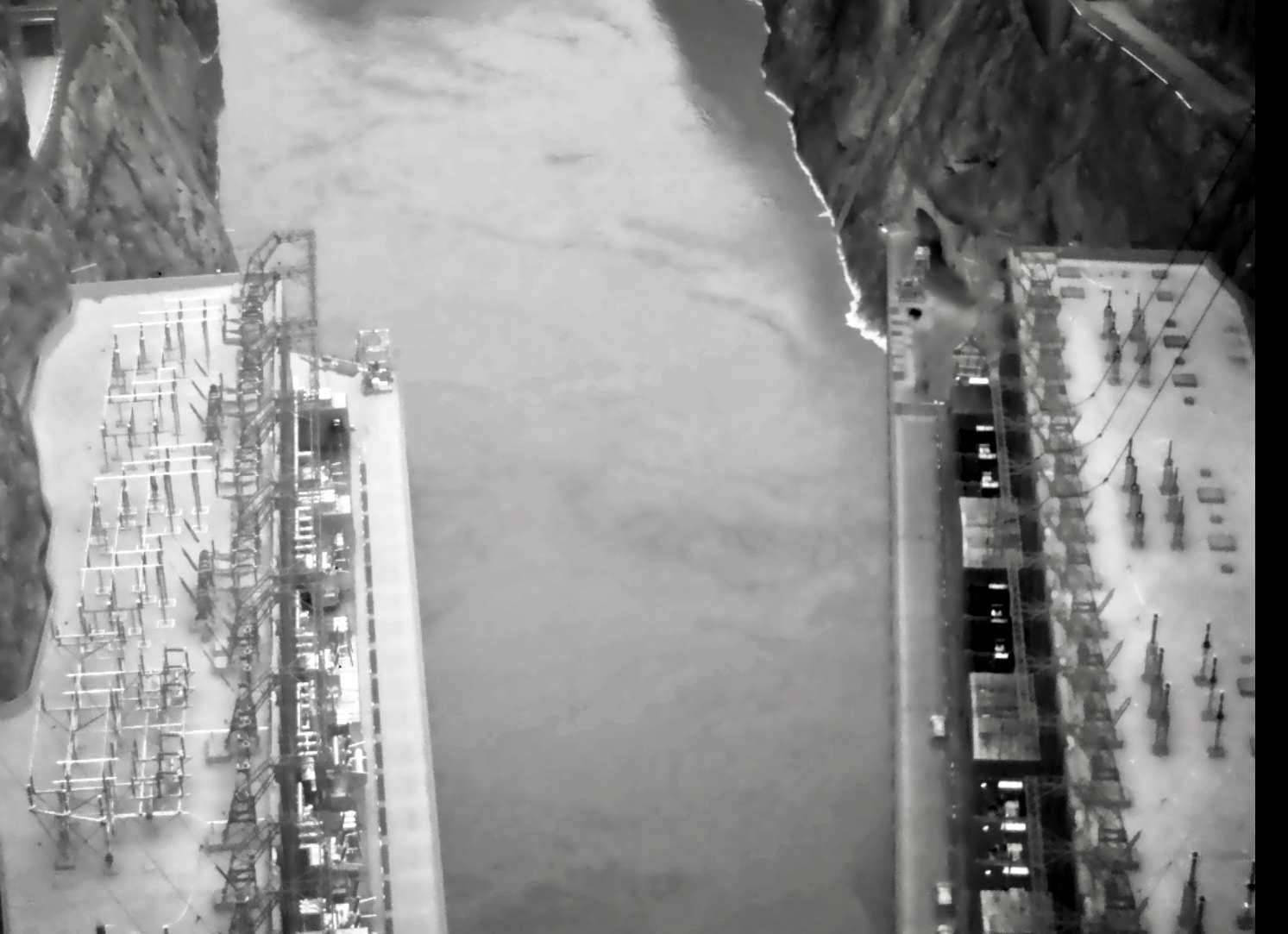
Critical infrastructures, including dams, power plants, and railways, form the backbone of a nation’s operational fabric. Their strategic importance and often remote or vast locations make them potential targets, necessitating top-notch security measures.
The introduction of long-range thermal cameras into the security matrix of these infrastructures presents a game-changer. Here’s how:
- Expansive Coverage: Given the large areas these infrastructures occupy, traditional surveillance methods might fall short in providing complete coverage. However, with a long-range thermal camera’s extensive reach, every nook and corner of a dam or the length of a railway can be effectively monitored.
- 24/7 Monitoring: Many infrastructures operate around the clock, and security cannot be compromised during nighttime or low-light conditions. The thermal imaging capability ensures that surveillance remains uninterrupted, capturing heat signatures even in complete darkness.
- Early Detection and Intervention: The camera’s ability to detect unusual activities or unauthorized personnel from a significant distance provides security personnel with an advantage. Early detection means more time for assessment and intervention, potentially averting security breaches or acts of sabotage.
- Challenging Terrains and Weather: Many vital infrastructures, like dams located in hilly regions or power plants in coastal areas, face challenging weather conditions, from fog to rain. The resilience of thermal cameras ensures consistent performance, regardless of these environmental challenges.
In conclusion, incorporating long-range thermal cameras into the security protocols of critical infrastructures can dramatically elevate protection levels. By offering real-time, expansive, and resilient surveillance, these cameras ensure that vital assets remain secure, contributing to the uninterrupted functioning and well-being of a nation.
Empowering Wildlife Conservation with Long-Range Thermal Cameras
Wildlife reserves, sanctuaries, and national parks are crucial for the conservation of biodiversity. They are home to many endangered species and provide a refuge from human encroachment.
These vast terrains, often located in areas with challenging weather conditions, demand cutting-edge surveillance for both conservation and security purposes.
The integration of long-range thermal cameras can bring about transformative benefits to these reserves.
Here’s a deep dive into its potential applications:
- Expansive Coverage: Many of these reserves span thousands of square kilometers. Traditional surveillance methods can be limited in their reach. The long-range thermal cameras, however, can cover vast stretches, ensuring that large swaths of land or water bodies are monitored effectively.
- Monitoring in Adverse Weather: Reserves often face unpredictable and harsh weather conditions. Whether it’s the torrential rains in tropical rainforests or the dense fogs in wetland reserves, thermal cameras cut through these conditions, detecting heat signatures irrespective of visibility challenges.
- Nocturnal Wildlife Monitoring: A significant portion of wildlife is nocturnal. Traditional cameras fail to capture nighttime activities effectively. Thermal cameras, on the other hand, can detect and monitor animals based on their heat signatures, providing invaluable insights into their behavior and movement patterns.
Let’s consider a few notable reserves around the world:
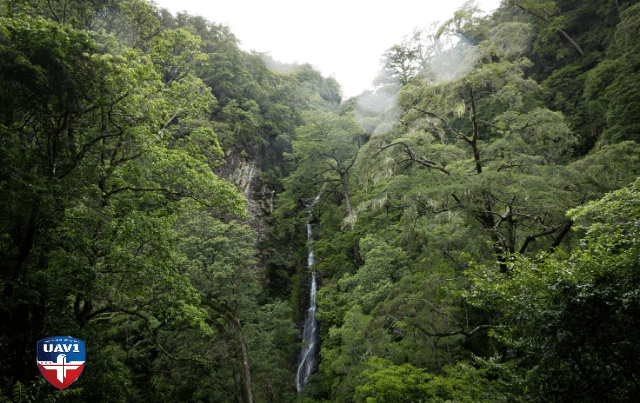
- Manú National Park, Peru: This tropical rainforest reserve experiences an average annual rainfall of about 1600-2400 mm. Spanning over 17,000 square kilometers, implementing thermal cameras can help monitor the rich biodiversity, especially during heavy rainfall when visibility is compromised.
- Sundarbans Reserve Forest, Bangladesh and India: A UNESCO World Heritage Site, the Sundarbans faces annual monsoons with rainfall averaging around 1,800 mm. Covering approximately 10,000 square kilometers, thermal cameras can aid in monitoring the elusive Bengal tigers and other wildlife, even during intense monsoon downpours.
- Hluhluwe–Imfolozi Park, South Africa: This reserve, spanning 960 square kilometers, occasionally experiences heavy fog, especially in the mornings. With the integration of thermal cameras, early morning movements of the African Big Five can be monitored without hindrance.
- Manú National Park – Peru
- Sundarbans Reserve Forest, Bangladesh and India
- Hluhluwe–Imfolozi Park, South Africa
In conclusion, the deployment of long-range thermal cameras in wildlife reserves worldwide can revolutionize conservation efforts. By offering resilient, round-the-clock surveillance, these cameras ensure that wildlife remains protected, and any potential threats, be they natural or human-induced, are promptly identified and addressed.
Optimizing observing strategies for monitoring animals using drone-mounted thermal infrared cameras
The detection and thermal characterization of the inner structure of the ‘Musmeci’ bridge deck by infrared thermography monitoring
Invisible Thin‐Film Patterns with Strong Infrared Emission as an Optical Security Feature
Thermal Infrared Face Recognition – A Biometric Identification Technique for Robust Security system
M5 SRTI/MRTI:
- Range: The M5 SRTI/MRTI offers a range of up to 20 km for vehicle detection and up to 15 km for human detection.
- Features: It is equipped with a 5MP CMOS sensor (higher quality sensors are available), a 60x optical zoom, and a 12x digital zoom. The camera also features a 640×512 resolution thermal imager with a 15° to 2° field of view, making it suitable for long-range surveillance applications.
- Applications: The M5 is ideal for border security, coastal surveillance, and critical infrastructure protection.
M7 Falcon Long Range Thermal Camera Range and Specifications
M7 Falcon:
- Range: The M7 offers a range of up to 30 km for vehicle detection and up to 20 km for human detection.
- Features: It comes with a 2MP CMOS sensor (higher quality sensors are available), a 60x optical zoom, and a 12x digital zoom. The thermal imager has a resolution of 640×512 and a 15° to 2° field of view.
- Applications: The M7 is suitable for border security, coastal surveillance, and critical infrastructure protection.
M9 Long Range Thermal Camera Range and Specifications
M9:
- Range: The M9 offers a range of up to 40 km for vehicle detection and up to 25 km for human detection.
- Features: It is equipped with a 2MP CMOS sensor (higher quality sensors are available), a 60x optical zoom, and a 12x digital zoom. The thermal imager has a resolution of 640×512 and a 15° to 2° field of view.
- Applications: The M9 is ideal for border security, coastal surveillance, and critical infrastructure protection.
M11 Long Range Thermal Camera Range and Specifications
M11:
- Range: The M11 offers a range of up to 60 km for vehicle detection and up to 30 km for human detection. This range is unprecedented and there are very few cameras that have ever reached this detection range making the M11 one of the longest ranged thermal camera.
- Features: It comes with a 2MP CMOS sensor (higher quality sensors are available), a 60x optical zoom, and a 12x digital zoom. The thermal imager has a resolution of 640×512 and a 15° to 2° field of view.
- Applications: The M11 is suitable for border security, coastal surveillance, and critical infrastructure protection.
Videos Demonstrating Thermal Camera Range:
Welcome To UAV1
All Things Thermal
At UAV1 we specialize in advanced thermal, night vision, and IR imaging cameras and systems. We custom design and build comprehensive long range surveillance cameras for mounted, vehicle, and mobile imaging operations.
Long Range Thermal Imaging PTZ Cameras
Long Range Thermal PTZ Cameras with IR rangefinders, auto-tracking, and up to 60km detection range.
Thermal Drone Cameras For Commercial and Personal Use
Micro thermal cameras designed specifically for drones, UAVs, and UAS, some weighing less than 160 grams, for extended range observation.
Night Vision Products
Night vision scopes, clip-on sights, accessories, and goggles tailored for military and hunting applications.
About UAV1
At UAV1, we harness the power of thermal imaging to offer solutions tailored to your company’s specific needs. Whether you’re looking to monitor infrastructure, conduct surveillance in low-light conditions, or detect energy inefficiencies in buildings, our state-of-the-art thermal cameras can provide unparalleled insights.
But why choose UAV1?
- Advanced Technology: Our thermal cameras are equipped with high-resolution sensors, ensuring that you receive clear and detailed thermograms for accurate analysis.
- Versatility: Suitable for a range of applications, our solutions can be customized to fit your industry’s requirements.
- Expertise: Our team of professionals is well-versed in the intricacies of thermal imaging, ensuring that you get the most out of our technology.
- Continuous Support: From initial consultation to post-deployment assistance, we’re with you every step of the way.
Thermal imaging is more than just a tool; it’s a window into a world unseen. Discover its potential and elevate your company’s operations to new heights. To explore how UAV1 can be your partner in this journey, contact us today.
Contact To Get Pricing, Details, Or Schedule a Demo For Our Thermal Cameras
FAQs
About SPI Corp
Yes, our headquarters are located strategically in Las Vegas, NV, a designated testing area for drones by the Federal Aviation Administration The perfect location to develop prototype custom thermal imaging systems for use on UAV surveillance & drone research & applications.
Yes, but the buyer acknowledges that if purchased items and services are destined for export (as defined in 22 CFR 120-130), BUYER has the complete responsibility and agrees to comply with all export laws and regulations of the U.S. Department of Commerce and the U.S. Department of State.
Yes,SPI Corp provides full service support from creating the design to building and installing the system. Contact us for more information.
Long Range Commercial Surveillance FAQS
Yes, most systems offer remote operation capabilities via secure networks.
While thermal cameras are less affected by fog or smoke compared to traditional cameras, heavy rain or snow can attenuate the infrared radiation they detect, potentially reducing image clarity. However, many high-end long-range thermal cameras come with features to mitigate these effects and still offer better visibility in adverse conditions than regular CCTV cameras. Our Long range thermal cameras include a built in wiper to keep snow and debris free of the lens.
No, thermal cameras cannot “see” through walls in the way that, for example, x-ray vision might be portrayed in movies. However, they can detect heat differentials on the surface of a wall that might be caused by something behind it. For instance, if there’s a heat source (like a heating pipe or an electrical fault) inside a wall, the heat emitted by that source can cause a temperature difference on the wall’s surface, which can be detected by a thermal camera.
It’s also worth noting that different materials have different thermal properties. Here’s a brief breakdown:
- Drywall: A common building material, drywall can show thermal differences if there’s a significant temperature disparity between the two sides. However, the camera doesn’t “see through” the drywall; it only detects surface temperature variations.
- Glass: Thermal cameras can’t see through glass as it reflects the infrared radiation, so the camera will typically show the heat signature of the glass surface itself.
- Thin plastics or fabrics: While not completely transparent to infrared radiation, thin materials like some plastics or fabrics can allow some heat signatures to pass through, depending on their thickness and specific properties.
- Metal: Metal surfaces are highly reflective to infrared radiation, so thermal cameras will usually show the surface temperature of the metal and any reflected heat signatures.
It’s essential to understand that while thermal cameras are powerful tools for detecting temperature differences, they do not provide “x-ray” vision through solid materials.
